Severity: 8192
Message: Creation of dynamic property CI_URI::$config is deprecated
Filename: core/URI.php
Line Number: 101
Backtrace:
File: /home/vinoped/domains/vinopedia.rs/public_html/index.php
Line: 315
Function: require_once
Severity: 8192
Message: Creation of dynamic property CI_Router::$uri is deprecated
Filename: core/Router.php
Line Number: 127
Backtrace:
File: /home/vinoped/domains/vinopedia.rs/public_html/index.php
Line: 315
Function: require_once
Severity: 8192
Message: Creation of dynamic property Post::$benchmark is deprecated
Filename: core/Controller.php
Line Number: 75
Backtrace:
File: /home/vinoped/domains/vinopedia.rs/public_html/application/controllers/Post.php
Line: 7
Function: __construct
File: /home/vinoped/domains/vinopedia.rs/public_html/index.php
Line: 315
Function: require_once
Severity: 8192
Message: Creation of dynamic property Post::$hooks is deprecated
Filename: core/Controller.php
Line Number: 75
Backtrace:
File: /home/vinoped/domains/vinopedia.rs/public_html/application/controllers/Post.php
Line: 7
Function: __construct
File: /home/vinoped/domains/vinopedia.rs/public_html/index.php
Line: 315
Function: require_once
Severity: 8192
Message: Creation of dynamic property Post::$config is deprecated
Filename: core/Controller.php
Line Number: 75
Backtrace:
File: /home/vinoped/domains/vinopedia.rs/public_html/application/controllers/Post.php
Line: 7
Function: __construct
File: /home/vinoped/domains/vinopedia.rs/public_html/index.php
Line: 315
Function: require_once
Severity: 8192
Message: Creation of dynamic property Post::$log is deprecated
Filename: core/Controller.php
Line Number: 75
Backtrace:
File: /home/vinoped/domains/vinopedia.rs/public_html/application/controllers/Post.php
Line: 7
Function: __construct
File: /home/vinoped/domains/vinopedia.rs/public_html/index.php
Line: 315
Function: require_once
Severity: 8192
Message: Creation of dynamic property Post::$utf8 is deprecated
Filename: core/Controller.php
Line Number: 75
Backtrace:
File: /home/vinoped/domains/vinopedia.rs/public_html/application/controllers/Post.php
Line: 7
Function: __construct
File: /home/vinoped/domains/vinopedia.rs/public_html/index.php
Line: 315
Function: require_once
Severity: 8192
Message: Creation of dynamic property Post::$uri is deprecated
Filename: core/Controller.php
Line Number: 75
Backtrace:
File: /home/vinoped/domains/vinopedia.rs/public_html/application/controllers/Post.php
Line: 7
Function: __construct
File: /home/vinoped/domains/vinopedia.rs/public_html/index.php
Line: 315
Function: require_once
Severity: 8192
Message: Creation of dynamic property Post::$exceptions is deprecated
Filename: core/Controller.php
Line Number: 75
Backtrace:
File: /home/vinoped/domains/vinopedia.rs/public_html/application/controllers/Post.php
Line: 7
Function: __construct
File: /home/vinoped/domains/vinopedia.rs/public_html/index.php
Line: 315
Function: require_once
Severity: 8192
Message: Creation of dynamic property Post::$router is deprecated
Filename: core/Controller.php
Line Number: 75
Backtrace:
File: /home/vinoped/domains/vinopedia.rs/public_html/application/controllers/Post.php
Line: 7
Function: __construct
File: /home/vinoped/domains/vinopedia.rs/public_html/index.php
Line: 315
Function: require_once
Severity: 8192
Message: Creation of dynamic property Post::$output is deprecated
Filename: core/Controller.php
Line Number: 75
Backtrace:
File: /home/vinoped/domains/vinopedia.rs/public_html/application/controllers/Post.php
Line: 7
Function: __construct
File: /home/vinoped/domains/vinopedia.rs/public_html/index.php
Line: 315
Function: require_once
Severity: 8192
Message: Creation of dynamic property Post::$security is deprecated
Filename: core/Controller.php
Line Number: 75
Backtrace:
File: /home/vinoped/domains/vinopedia.rs/public_html/application/controllers/Post.php
Line: 7
Function: __construct
File: /home/vinoped/domains/vinopedia.rs/public_html/index.php
Line: 315
Function: require_once
Severity: 8192
Message: Creation of dynamic property Post::$input is deprecated
Filename: core/Controller.php
Line Number: 75
Backtrace:
File: /home/vinoped/domains/vinopedia.rs/public_html/application/controllers/Post.php
Line: 7
Function: __construct
File: /home/vinoped/domains/vinopedia.rs/public_html/index.php
Line: 315
Function: require_once
Severity: 8192
Message: Creation of dynamic property Post::$lang is deprecated
Filename: core/Controller.php
Line Number: 75
Backtrace:
File: /home/vinoped/domains/vinopedia.rs/public_html/application/controllers/Post.php
Line: 7
Function: __construct
File: /home/vinoped/domains/vinopedia.rs/public_html/index.php
Line: 315
Function: require_once
Severity: 8192
Message: Creation of dynamic property Post::$load is deprecated
Filename: core/Controller.php
Line Number: 78
Backtrace:
File: /home/vinoped/domains/vinopedia.rs/public_html/application/controllers/Post.php
Line: 7
Function: __construct
File: /home/vinoped/domains/vinopedia.rs/public_html/index.php
Line: 315
Function: require_once
Severity: 8192
Message: Creation of dynamic property Post::$db is deprecated
Filename: core/Loader.php
Line Number: 396
Backtrace:
File: /home/vinoped/domains/vinopedia.rs/public_html/application/controllers/Post.php
Line: 7
Function: __construct
File: /home/vinoped/domains/vinopedia.rs/public_html/index.php
Line: 315
Function: require_once
Severity: 8192
Message: Creation of dynamic property CI_DB_mysqli_driver::$failover is deprecated
Filename: database/DB_driver.php
Line Number: 371
Backtrace:
File: /home/vinoped/domains/vinopedia.rs/public_html/application/controllers/Post.php
Line: 7
Function: __construct
File: /home/vinoped/domains/vinopedia.rs/public_html/index.php
Line: 315
Function: require_once
Severity: 8192
Message: Return type of CI_Session_files_driver::open($save_path, $name) should either be compatible with SessionHandlerInterface::open(string $path, string $name): bool, or the #[\ReturnTypeWillChange] attribute should be used to temporarily suppress the notice
Filename: drivers/Session_files_driver.php
Line Number: 132
Backtrace:
File: /home/vinoped/domains/vinopedia.rs/public_html/application/controllers/Post.php
Line: 7
Function: __construct
File: /home/vinoped/domains/vinopedia.rs/public_html/index.php
Line: 315
Function: require_once
Severity: 8192
Message: Return type of CI_Session_files_driver::close() should either be compatible with SessionHandlerInterface::close(): bool, or the #[\ReturnTypeWillChange] attribute should be used to temporarily suppress the notice
Filename: drivers/Session_files_driver.php
Line Number: 292
Backtrace:
File: /home/vinoped/domains/vinopedia.rs/public_html/application/controllers/Post.php
Line: 7
Function: __construct
File: /home/vinoped/domains/vinopedia.rs/public_html/index.php
Line: 315
Function: require_once
Severity: 8192
Message: Return type of CI_Session_files_driver::read($session_id) should either be compatible with SessionHandlerInterface::read(string $id): string|false, or the #[\ReturnTypeWillChange] attribute should be used to temporarily suppress the notice
Filename: drivers/Session_files_driver.php
Line Number: 166
Backtrace:
File: /home/vinoped/domains/vinopedia.rs/public_html/application/controllers/Post.php
Line: 7
Function: __construct
File: /home/vinoped/domains/vinopedia.rs/public_html/index.php
Line: 315
Function: require_once
Severity: 8192
Message: Return type of CI_Session_files_driver::write($session_id, $session_data) should either be compatible with SessionHandlerInterface::write(string $id, string $data): bool, or the #[\ReturnTypeWillChange] attribute should be used to temporarily suppress the notice
Filename: drivers/Session_files_driver.php
Line Number: 235
Backtrace:
File: /home/vinoped/domains/vinopedia.rs/public_html/application/controllers/Post.php
Line: 7
Function: __construct
File: /home/vinoped/domains/vinopedia.rs/public_html/index.php
Line: 315
Function: require_once
Severity: 8192
Message: Return type of CI_Session_files_driver::destroy($session_id) should either be compatible with SessionHandlerInterface::destroy(string $id): bool, or the #[\ReturnTypeWillChange] attribute should be used to temporarily suppress the notice
Filename: drivers/Session_files_driver.php
Line Number: 315
Backtrace:
File: /home/vinoped/domains/vinopedia.rs/public_html/application/controllers/Post.php
Line: 7
Function: __construct
File: /home/vinoped/domains/vinopedia.rs/public_html/index.php
Line: 315
Function: require_once
Severity: 8192
Message: Return type of CI_Session_files_driver::gc($maxlifetime) should either be compatible with SessionHandlerInterface::gc(int $max_lifetime): int|false, or the #[\ReturnTypeWillChange] attribute should be used to temporarily suppress the notice
Filename: drivers/Session_files_driver.php
Line Number: 356
Backtrace:
File: /home/vinoped/domains/vinopedia.rs/public_html/application/controllers/Post.php
Line: 7
Function: __construct
File: /home/vinoped/domains/vinopedia.rs/public_html/index.php
Line: 315
Function: require_once
Severity: Warning
Message: ini_set(): Session ini settings cannot be changed after headers have already been sent
Filename: Session/Session.php
Line Number: 282
Backtrace:
File: /home/vinoped/domains/vinopedia.rs/public_html/application/controllers/Post.php
Line: 7
Function: __construct
File: /home/vinoped/domains/vinopedia.rs/public_html/index.php
Line: 315
Function: require_once
Severity: Warning
Message: session_set_cookie_params(): Session cookie parameters cannot be changed after headers have already been sent
Filename: Session/Session.php
Line Number: 289
Backtrace:
File: /home/vinoped/domains/vinopedia.rs/public_html/application/controllers/Post.php
Line: 7
Function: __construct
File: /home/vinoped/domains/vinopedia.rs/public_html/index.php
Line: 315
Function: require_once
Severity: Warning
Message: ini_set(): Session ini settings cannot be changed after headers have already been sent
Filename: Session/Session.php
Line Number: 304
Backtrace:
File: /home/vinoped/domains/vinopedia.rs/public_html/application/controllers/Post.php
Line: 7
Function: __construct
File: /home/vinoped/domains/vinopedia.rs/public_html/index.php
Line: 315
Function: require_once
Severity: Warning
Message: ini_set(): Session ini settings cannot be changed after headers have already been sent
Filename: Session/Session.php
Line Number: 314
Backtrace:
File: /home/vinoped/domains/vinopedia.rs/public_html/application/controllers/Post.php
Line: 7
Function: __construct
File: /home/vinoped/domains/vinopedia.rs/public_html/index.php
Line: 315
Function: require_once
Severity: Warning
Message: ini_set(): Session ini settings cannot be changed after headers have already been sent
Filename: Session/Session.php
Line Number: 315
Backtrace:
File: /home/vinoped/domains/vinopedia.rs/public_html/application/controllers/Post.php
Line: 7
Function: __construct
File: /home/vinoped/domains/vinopedia.rs/public_html/index.php
Line: 315
Function: require_once
Severity: Warning
Message: ini_set(): Session ini settings cannot be changed after headers have already been sent
Filename: Session/Session.php
Line Number: 316
Backtrace:
File: /home/vinoped/domains/vinopedia.rs/public_html/application/controllers/Post.php
Line: 7
Function: __construct
File: /home/vinoped/domains/vinopedia.rs/public_html/index.php
Line: 315
Function: require_once
Severity: Warning
Message: ini_set(): Session ini settings cannot be changed after headers have already been sent
Filename: Session/Session.php
Line Number: 317
Backtrace:
File: /home/vinoped/domains/vinopedia.rs/public_html/application/controllers/Post.php
Line: 7
Function: __construct
File: /home/vinoped/domains/vinopedia.rs/public_html/index.php
Line: 315
Function: require_once
Severity: Warning
Message: ini_set(): Session ini settings cannot be changed after headers have already been sent
Filename: Session/Session.php
Line Number: 375
Backtrace:
File: /home/vinoped/domains/vinopedia.rs/public_html/application/controllers/Post.php
Line: 7
Function: __construct
File: /home/vinoped/domains/vinopedia.rs/public_html/index.php
Line: 315
Function: require_once
Severity: Warning
Message: session_set_save_handler(): Session save handler cannot be changed after headers have already been sent
Filename: Session/Session.php
Line Number: 110
Backtrace:
File: /home/vinoped/domains/vinopedia.rs/public_html/application/controllers/Post.php
Line: 7
Function: __construct
File: /home/vinoped/domains/vinopedia.rs/public_html/index.php
Line: 315
Function: require_once
Severity: Warning
Message: session_start(): Session cannot be started after headers have already been sent
Filename: Session/Session.php
Line Number: 143
Backtrace:
File: /home/vinoped/domains/vinopedia.rs/public_html/application/controllers/Post.php
Line: 7
Function: __construct
File: /home/vinoped/domains/vinopedia.rs/public_html/index.php
Line: 315
Function: require_once
Severity: 8192
Message: Creation of dynamic property Post::$session is deprecated
Filename: core/Loader.php
Line Number: 1283
Backtrace:
File: /home/vinoped/domains/vinopedia.rs/public_html/application/controllers/Post.php
Line: 7
Function: __construct
File: /home/vinoped/domains/vinopedia.rs/public_html/index.php
Line: 315
Function: require_once
Severity: 8192
Message: Creation of dynamic property Post::$form_validation is deprecated
Filename: core/Loader.php
Line Number: 1283
Backtrace:
File: /home/vinoped/domains/vinopedia.rs/public_html/application/controllers/Post.php
Line: 7
Function: __construct
File: /home/vinoped/domains/vinopedia.rs/public_html/index.php
Line: 315
Function: require_once
Severity: 8192
Message: Creation of dynamic property Post::$page_model is deprecated
Filename: core/Loader.php
Line Number: 358
Backtrace:
File: /home/vinoped/domains/vinopedia.rs/public_html/application/controllers/Post.php
Line: 8
Function: model
File: /home/vinoped/domains/vinopedia.rs/public_html/index.php
Line: 315
Function: require_once
Severity: 8192
Message: Creation of dynamic property Post::$podesavanja_model is deprecated
Filename: core/Loader.php
Line Number: 358
Backtrace:
File: /home/vinoped/domains/vinopedia.rs/public_html/application/controllers/Post.php
Line: 9
Function: model
File: /home/vinoped/domains/vinopedia.rs/public_html/index.php
Line: 315
Function: require_once
Severity: 8192
Message: filter_var(): Passing null to parameter #3 ($options) of type array|int is deprecated
Filename: core/Input.php
Line Number: 572
Backtrace:
File: /home/vinoped/domains/vinopedia.rs/public_html/application/models/Page_model.php
Line: 426
Function: ip_address
File: /home/vinoped/domains/vinopedia.rs/public_html/application/controllers/Post.php
Line: 26
Function: visitors
File: /home/vinoped/domains/vinopedia.rs/public_html/index.php
Line: 315
Function: require_once
Severity: 8192
Message: Creation of dynamic property CI_Loader::$benchmark is deprecated
Filename: core/Loader.php
Line Number: 931
Backtrace:
File: /home/vinoped/domains/vinopedia.rs/public_html/application/controllers/Post.php
Line: 77
Function: view
File: /home/vinoped/domains/vinopedia.rs/public_html/index.php
Line: 315
Function: require_once
Severity: 8192
Message: Creation of dynamic property CI_Loader::$hooks is deprecated
Filename: core/Loader.php
Line Number: 931
Backtrace:
File: /home/vinoped/domains/vinopedia.rs/public_html/application/controllers/Post.php
Line: 77
Function: view
File: /home/vinoped/domains/vinopedia.rs/public_html/index.php
Line: 315
Function: require_once
Severity: 8192
Message: Creation of dynamic property CI_Loader::$config is deprecated
Filename: core/Loader.php
Line Number: 931
Backtrace:
File: /home/vinoped/domains/vinopedia.rs/public_html/application/controllers/Post.php
Line: 77
Function: view
File: /home/vinoped/domains/vinopedia.rs/public_html/index.php
Line: 315
Function: require_once
Severity: 8192
Message: Creation of dynamic property CI_Loader::$log is deprecated
Filename: core/Loader.php
Line Number: 931
Backtrace:
File: /home/vinoped/domains/vinopedia.rs/public_html/application/controllers/Post.php
Line: 77
Function: view
File: /home/vinoped/domains/vinopedia.rs/public_html/index.php
Line: 315
Function: require_once
Severity: 8192
Message: Creation of dynamic property CI_Loader::$utf8 is deprecated
Filename: core/Loader.php
Line Number: 931
Backtrace:
File: /home/vinoped/domains/vinopedia.rs/public_html/application/controllers/Post.php
Line: 77
Function: view
File: /home/vinoped/domains/vinopedia.rs/public_html/index.php
Line: 315
Function: require_once
Severity: 8192
Message: Creation of dynamic property CI_Loader::$uri is deprecated
Filename: core/Loader.php
Line Number: 931
Backtrace:
File: /home/vinoped/domains/vinopedia.rs/public_html/application/controllers/Post.php
Line: 77
Function: view
File: /home/vinoped/domains/vinopedia.rs/public_html/index.php
Line: 315
Function: require_once
Severity: 8192
Message: Creation of dynamic property CI_Loader::$exceptions is deprecated
Filename: core/Loader.php
Line Number: 931
Backtrace:
File: /home/vinoped/domains/vinopedia.rs/public_html/application/controllers/Post.php
Line: 77
Function: view
File: /home/vinoped/domains/vinopedia.rs/public_html/index.php
Line: 315
Function: require_once
Severity: 8192
Message: Creation of dynamic property CI_Loader::$router is deprecated
Filename: core/Loader.php
Line Number: 931
Backtrace:
File: /home/vinoped/domains/vinopedia.rs/public_html/application/controllers/Post.php
Line: 77
Function: view
File: /home/vinoped/domains/vinopedia.rs/public_html/index.php
Line: 315
Function: require_once
Severity: 8192
Message: Creation of dynamic property CI_Loader::$output is deprecated
Filename: core/Loader.php
Line Number: 931
Backtrace:
File: /home/vinoped/domains/vinopedia.rs/public_html/application/controllers/Post.php
Line: 77
Function: view
File: /home/vinoped/domains/vinopedia.rs/public_html/index.php
Line: 315
Function: require_once
Severity: 8192
Message: Creation of dynamic property CI_Loader::$security is deprecated
Filename: core/Loader.php
Line Number: 931
Backtrace:
File: /home/vinoped/domains/vinopedia.rs/public_html/application/controllers/Post.php
Line: 77
Function: view
File: /home/vinoped/domains/vinopedia.rs/public_html/index.php
Line: 315
Function: require_once
Severity: 8192
Message: Creation of dynamic property CI_Loader::$input is deprecated
Filename: core/Loader.php
Line Number: 931
Backtrace:
File: /home/vinoped/domains/vinopedia.rs/public_html/application/controllers/Post.php
Line: 77
Function: view
File: /home/vinoped/domains/vinopedia.rs/public_html/index.php
Line: 315
Function: require_once
Severity: 8192
Message: Creation of dynamic property CI_Loader::$lang is deprecated
Filename: core/Loader.php
Line Number: 931
Backtrace:
File: /home/vinoped/domains/vinopedia.rs/public_html/application/controllers/Post.php
Line: 77
Function: view
File: /home/vinoped/domains/vinopedia.rs/public_html/index.php
Line: 315
Function: require_once
Severity: 8192
Message: Creation of dynamic property CI_Loader::$load is deprecated
Filename: core/Loader.php
Line Number: 931
Backtrace:
File: /home/vinoped/domains/vinopedia.rs/public_html/application/controllers/Post.php
Line: 77
Function: view
File: /home/vinoped/domains/vinopedia.rs/public_html/index.php
Line: 315
Function: require_once
Severity: 8192
Message: Creation of dynamic property CI_Loader::$db is deprecated
Filename: core/Loader.php
Line Number: 931
Backtrace:
File: /home/vinoped/domains/vinopedia.rs/public_html/application/controllers/Post.php
Line: 77
Function: view
File: /home/vinoped/domains/vinopedia.rs/public_html/index.php
Line: 315
Function: require_once
Severity: 8192
Message: Creation of dynamic property CI_Loader::$session is deprecated
Filename: core/Loader.php
Line Number: 931
Backtrace:
File: /home/vinoped/domains/vinopedia.rs/public_html/application/controllers/Post.php
Line: 77
Function: view
File: /home/vinoped/domains/vinopedia.rs/public_html/index.php
Line: 315
Function: require_once
Severity: 8192
Message: Creation of dynamic property CI_Loader::$form_validation is deprecated
Filename: core/Loader.php
Line Number: 931
Backtrace:
File: /home/vinoped/domains/vinopedia.rs/public_html/application/controllers/Post.php
Line: 77
Function: view
File: /home/vinoped/domains/vinopedia.rs/public_html/index.php
Line: 315
Function: require_once
Severity: 8192
Message: Creation of dynamic property CI_Loader::$page_model is deprecated
Filename: core/Loader.php
Line Number: 931
Backtrace:
File: /home/vinoped/domains/vinopedia.rs/public_html/application/controllers/Post.php
Line: 77
Function: view
File: /home/vinoped/domains/vinopedia.rs/public_html/index.php
Line: 315
Function: require_once
Severity: 8192
Message: Creation of dynamic property CI_Loader::$podesavanja_model is deprecated
Filename: core/Loader.php
Line Number: 931
Backtrace:
File: /home/vinoped/domains/vinopedia.rs/public_html/application/controllers/Post.php
Line: 77
Function: view
File: /home/vinoped/domains/vinopedia.rs/public_html/index.php
Line: 315
Function: require_once
Wine of the week
Wine of the week / 06/14/2020 / 2428
(Orašac, Šumadija)
As early as in 1874, M. Savić, our most prominent Serbian oenologist and agronomist, head of the Ministry of Economy and yearslong president of the Serbian Agricultural Society, noticed while visiting Orašac the quality of Belina Smederevska (or simply called Smederevka) in local vineyards if the yield is reduced:
"While still on the path heading from Banja vineyards towards the town of Aranđelovac, one can easily find his way through both vineyard regions. There is a hill on the right that can be seen from afar, with ugly bare peak, but it is not the hill of Orašac; the latter is lower, and its peak is wider, almost like a plateau. A genuine mountain range rises on the right side, composed of two mountains: Venčac, followed by Bukulja. The first is planted with vineyards, the latter is covered only with forests.
The hill of Orašac, or at least its section overlooking Mt. Venčac and covered with vineyards, consists of a limestone base, which can be perceived on its eroded hillside. The hillside surface is quite steep and intersected by such frequent ravines, that it is difficult to find two similar plots of land intersected by those ravines.
The vineyards are predominantly south-east facing. The soil is in some places quite rocky and somewhat steep, so I think the vines can obtain heat and bask in the sun at will.
The predominant grape varieties are Kameničanka and some Začinak, although Mr. M. T. planted Belina Smederevska long ago and it thrives very well. The only thing I have noticed is that local Smederevka has poor vine growth and small leaves this year. Therefore, I am inclined to think that Smederevka doesn't thrive on arid positions such as Orašac hill; but even if there are fewer grapes in quantity, they will not be lacking in quality. "
This year, we have welcomed on the market Smederevka (Belina) from 2019 harvest under the commercial label Belina from new Matijašević Winery...
On the nose, a very intense, distinct fruit-forward impression dominated by aromas of citrus, pear, unripe peaches, mown grass. However, the real surprise comes when we taste Belina on the palate. Full-bodied mouthfeel that can rarely be found in Smederevka wines. Juicy, crisp, salivating... In the mouth, the flavors of pear, citrus, grapefruit first come to the fore, and then they are subdued by more herbal tones, nettle, basil... Harmonious, balanced, refreshing acidity. In the finish, a fresh trace of lemon peel appears again.
I'm not an expert in design, but the label also sends out a message that it's all about the local terroir: whiteness of Venčac marble, the name of the grape variety written in Cyrillic, minimalistic, elegant ... A piece of stone inviting a sculptor to shape it, a piece of white paper inviting a writer to write his story... And there lies Belina inside.
So far, Smederevka as a variety has been able to pleasantly surprise Serbian wine audience, as it was the case in 2008 when Smederevka 2007 from Janko's Cellar won the trophy for the best white wine made from indigenous grape variety at the Grand Wine Tasting held in 2008 under the auspices of SERSA, the national association of sommeliers.
In any case, we're dealing with a variety that was first mentioned in written sources in 1855 when the Austrian ampelographer Trumer published the Systematic Classification which lists "Weiser Szemendrianer" (in German: White Smederevka) as a grape variety widespread in Hungary. (which is logical because at that time parts of Serbia belonged to Austria-Hungarian Empire). The reason for the relatively late mentioning of the variety under that name lies in the fact that until then, Smederevka was often co-planted in vineyards with its parent, the variety called Gouais Blanc, which was also known as Belina. The local population in Serbia at that time often distinguished between Large Belina and Small Belina in the vineyards, not knowing that they were separate genetically-related varieties.
Matijašević Winery is optimistic that this variety will return to its former glory and that we will fully explore its potential.
Rating: 89/100


__________________________________________________
Rating scale:
50-69 wines with serious flaws, unacceptable
70-79 simple wines, drinkable, possible wine flaws to a lesser extent
80-84 good, pleasant wines for everyday use
85-89 excellent, harmonious wines with clear expression of variety and / or terroir
90-94 outstanding wines
95-100 cult wines, with potential for long-term aging

Tomislav Ivanović
Awarded wine writer, wine critic and contributor to selected wine magazines. WSET3-certified author and editor-in-chief of www.vinopedia.rs. Member of Vojvodina Sommelier Association. Juror in national and international wine competitions. Lecturing about wines of Serbia and the Balkans. Local partner of Wine Mosaic organization. Co-founder of International Prokupac Day.

Pročitajte i druge članke iz ove rubrike:
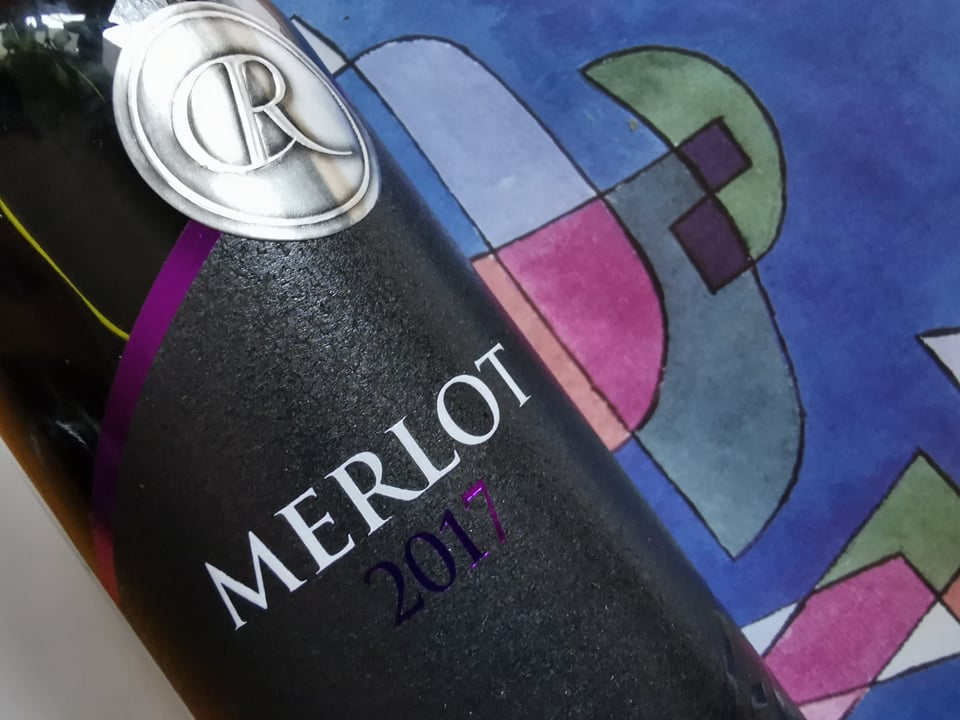

MERLOT 2017 - RUBIN
PROČITAJ VIŠE
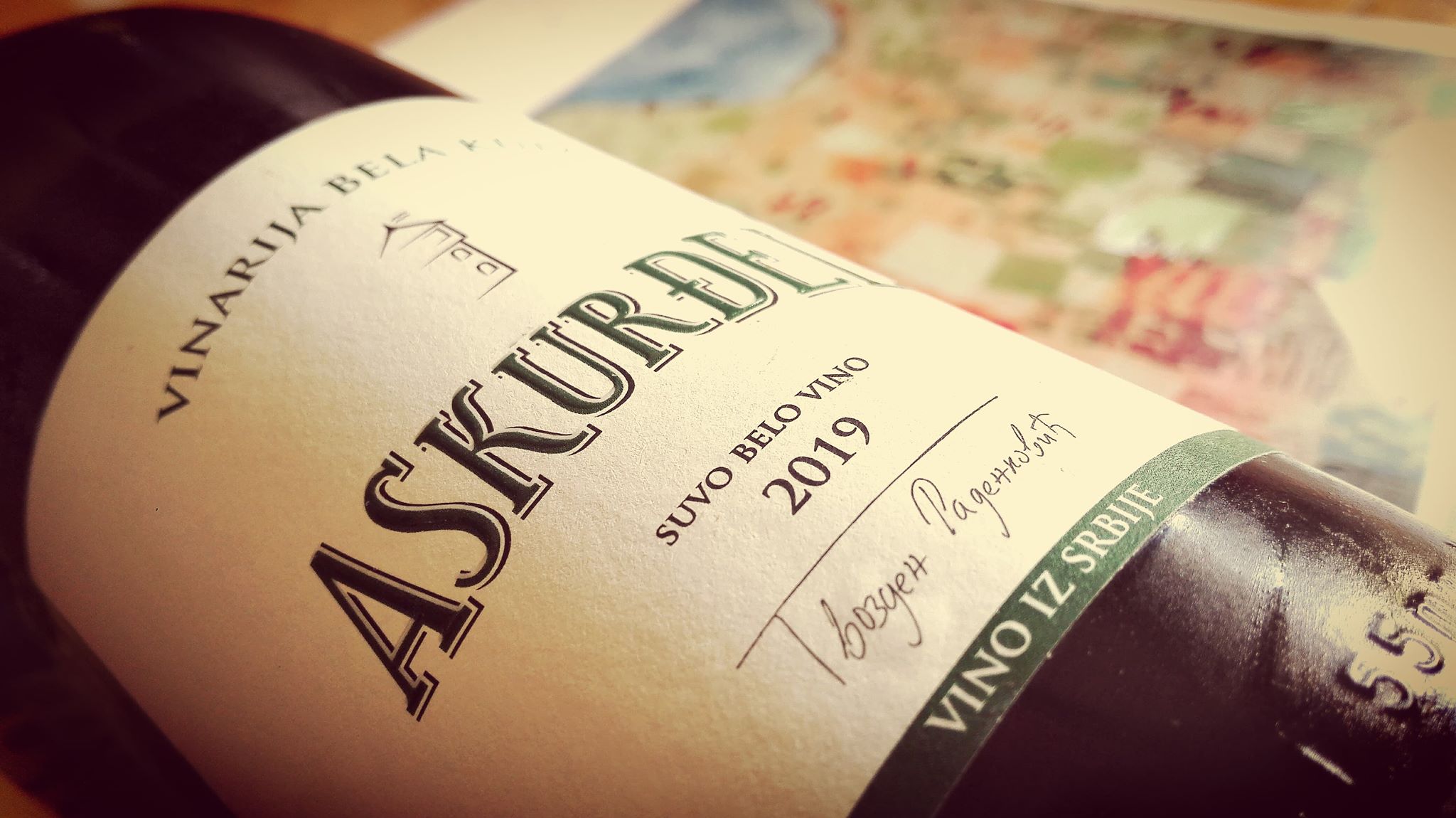

ASKURĐEL 2019 - BELA KULA
PROČITAJ VIŠE
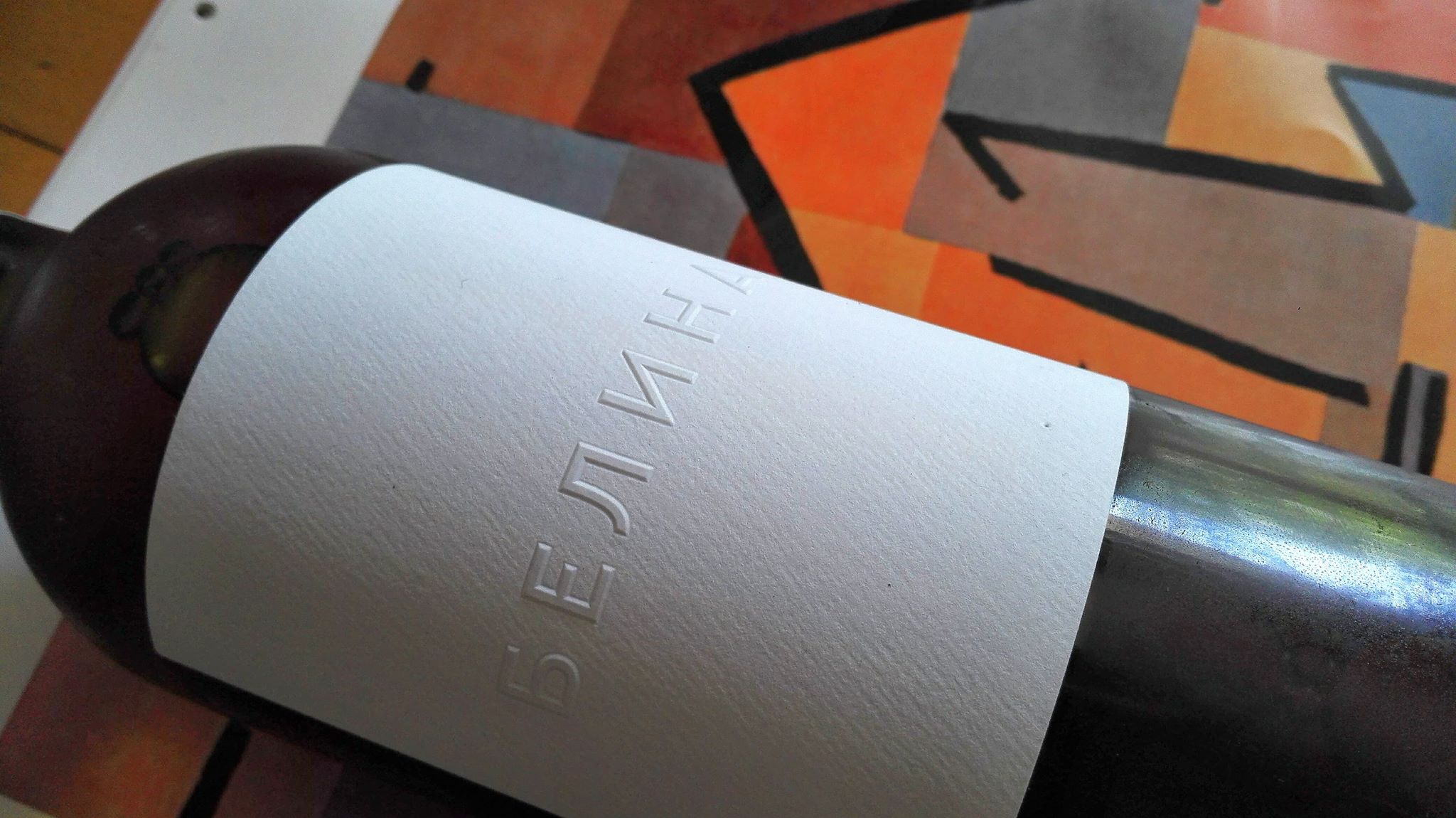

BELINA 2019 - MATIJAŠEVIĆ
PROČITAJ VIŠE
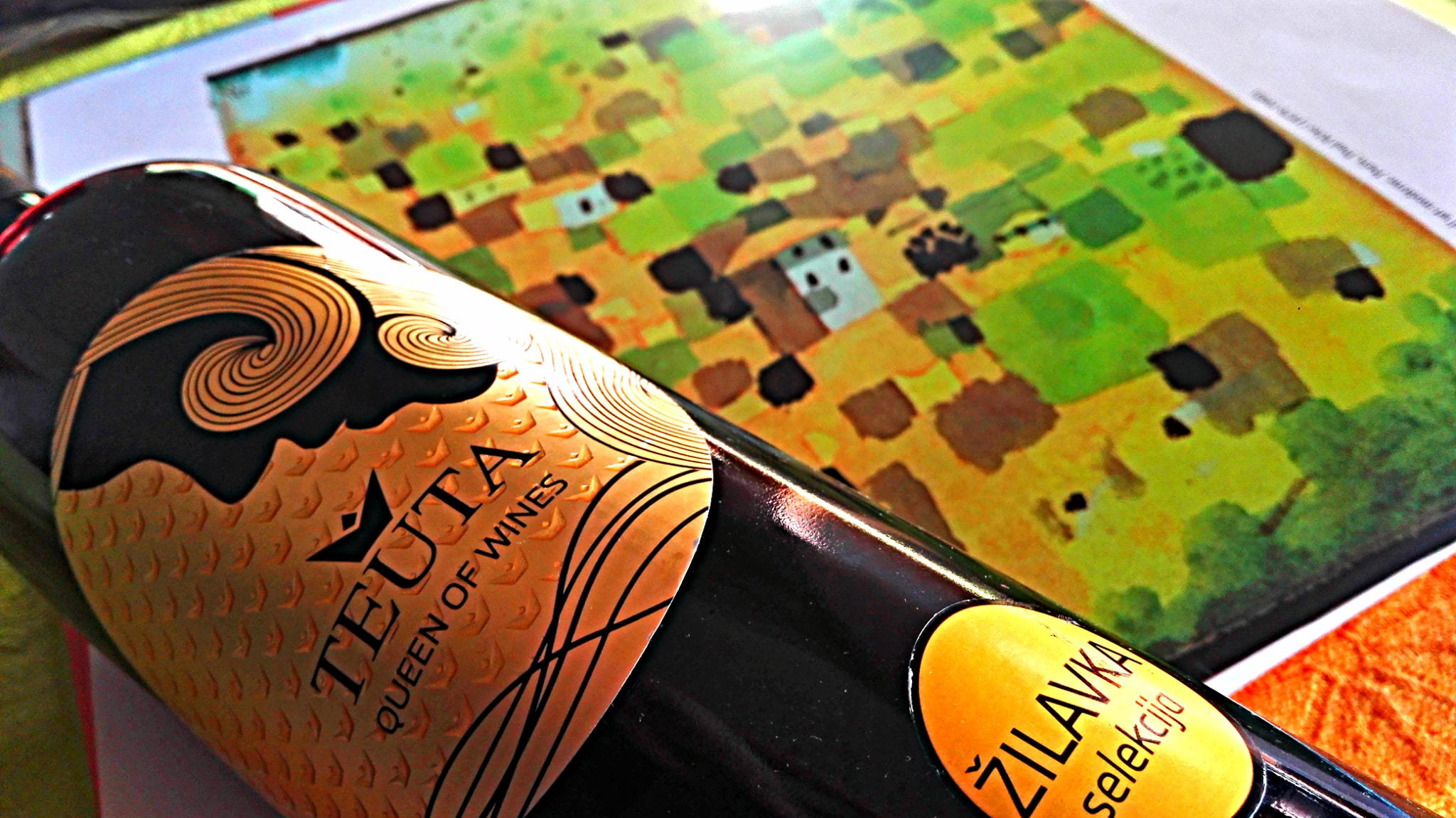

TEUTA ŽILAVKA SELEKCIJA 2017 - ČITLUK
Žilavka iz Hercegovine se polako ali sigurno sve više probija u sam vrh vinske scene regije.
PROČITAJ VIŠE
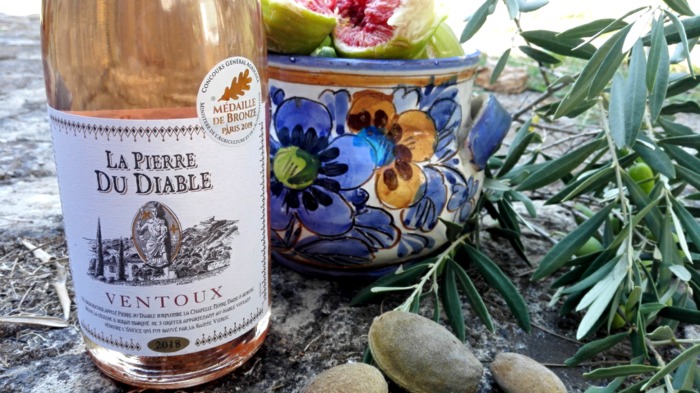

LA PIERRE DU DIABLE ROSÉ 2018 - RHONÉA
Kakva su vina koja najčešće piju turisti koji se vinima snabdevaju u supermarketima duž obale južne Francuske?
PROČITAJ VIŠE
Winner MILLESIMA BLOG AWARD 2016

Pobednik MILLESIMA BLOG AWARD 2016
VINO & FINO wine personality of the year 2016

VINO & FINO vinska ličnost godine 2016